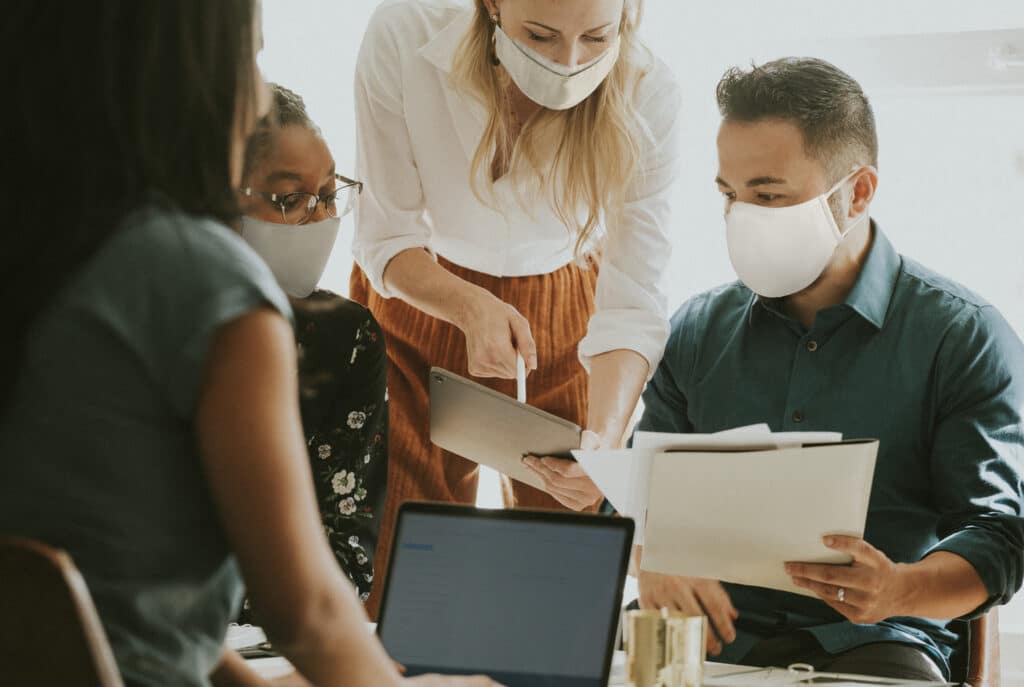 Like so many industries throughout the world, the construction sector has felt the impact of the COVID-19 pandemic. And now, as lawmakers begin to slowly ease lockdown restrictions and the public attempts to coexist with the virus – we must remain vigilant about adhering to safety measures on construction job sites in order to prevent a spike in cases.
Like so many industries throughout the world, the construction sector has felt the impact of the COVID-19 pandemic. And now, as lawmakers begin to slowly ease lockdown restrictions and the public attempts to coexist with the virus – we must remain vigilant about adhering to safety measures on construction job sites in order to prevent a spike in cases.
Construction sites, by-in-large, are not havens of hygiene. Trades come and go, travelling from multiple site locations. They share equipment, transportation, and meals, working extended hours side-by-side. Numerous workers also often share a single portable toilet and have little to no access to antibacterial soap and running water, making job sites ripe for an outbreak.
However, with the proper precautions, this can be avoided. Below (in the blog and accompanying infographic) we outline several recommendations from the Centers for Disease Control (CDC) and the Occupational Safety and Health Administration (OSHA) on how to best protect your employees from COVID-19 on active construction sites.
Plan for Before and After
OSHA recommends creating an infectious disease and preparedness and response plan – if one isn’t already implemented – and incorporating it into the site-specific safety plan. The contents should identifying where and how workers could potentially be exposed on site as well as the measures that will be taken should an employee test positive. OSHA also recommends tapping an employee as the site’s dedicated COVID-19 point person. He or she will be responsible for carrying out the response plan.
Keep Employees at a Distance
For months now, medical officials have hammered home the importance of social distancing. While not always easily achievable on jobsites, particularly large-scale ones, it remains one of the most important actions to slowing the spread. Some steps to help support your social distancing include rearranging the project schedule, alternating shifts so trades don’t overlap and discouraging workers from gathering in large groups during work hours or at lunch.
Screen Employees Before Allowing Jobsite Access
Since the coronavirus first appeared, it’s trademark symptoms have included fever, cough and shortness of breath. The CDC has since added more: fatigue, muscle or body aches, headache, new loss of taste or smell, sore throat, congestion or runny nose, nausea or vomiting and diarrhea. Screening employees (using a contactless thermometer) and/or having them complete a symptom questionnaire prior to commencing work will help determine their health status and whether or not they should return home to quarantine/isolate.
Promote Good Hygiene
As previously mentioned, job sites aren’t always known for their cleanliness. The time has come to make a major shift, however, and encourage employees to practice proper hygiene. The CDC recommends that everyone washes their hands often with soap and water for at least 20 seconds. If soap and water are not readily available, use a hand sanitizer that contains at least 60% alcohol. To help employees adhere to these guidelines – especially if gloves are unavailable, and they regularly handle tools, equipment, and materials – place temporary handwashing and sanitizing stations throughout the jobsite.
Keep Lines of Communication Open
Information is power. Keeping your employees informed of the latest updates and guidelines regarding COVID-19 from the CDC and OSHA as well as your company’s own internal protocols is one of the best ways to keep everyone safe. Operating in ignorance will only contribute to the spread.
Wear the Appropriate PPE
Construction workers are accustomed to wearing personal protective equipment (PPE) on site. Now, wearing the appropriate PPE can not only save their life but those around them, at home and in the general public. Employees should be encouraged to wear appropriate gloves and face masks/shields/coverings based on the work being performed, your company’s own internal guidelines and if social distancing is not easily accomplished.
Disinfect the Site and Then Some More
Just as employees washing their hands regularly and wearing a face covering of some sort can help the spread, so can disinfecting the jobsite. However, there’s a right and wrong to go about it. Always select a disinfectant based on the type of surface that needs to be cleaned and follow the label directions regarding contact time to ensure effective disinfecting.
These are just a small sampling of the recommendations the CDC and OSHA offer on their respective websites. Please visit the CDC and OSHA for more information.
________________
About VP Engineering
VP Engineering is a top MEP design firm offering engineering expertise in senior living, multi-family, hospitality, and retail/commercial markets worldwide. With experience in a wide range of building types, our MEP engineering services help keep projects on budget and achieve your goals. Learn more at vpce.com.



